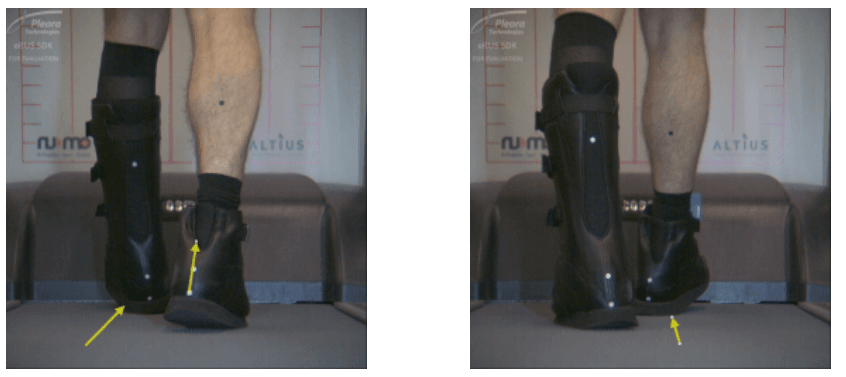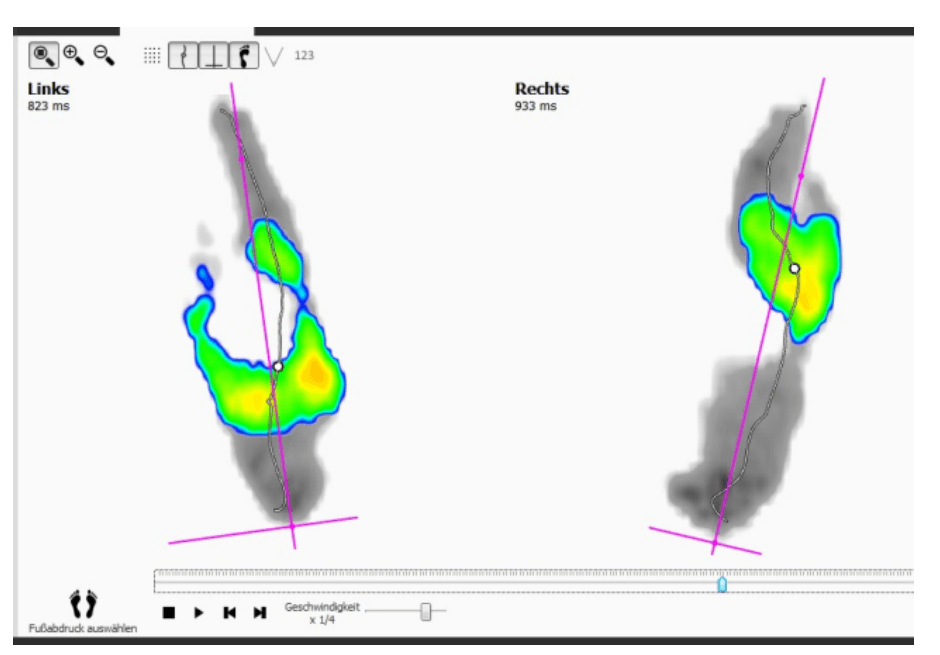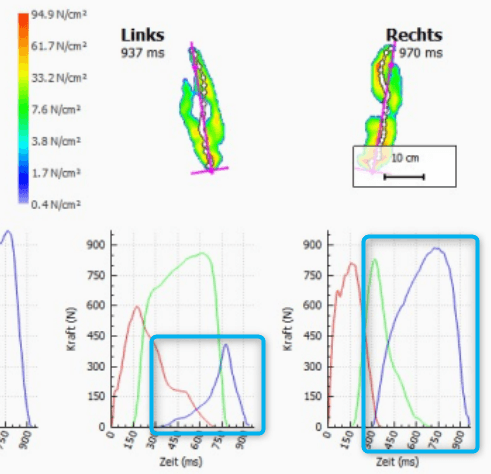Today was another good day. At the 6-week post-op check-up, my doctor confirmed that he's very satisfied with the healing progress of the tendon. He also likes the tension (preload) of the foot, so we can now begin reducing the heel wedges.
But first, I had to do a gait analysis:
The first step was a video recording on the treadmill. For this, measurement markers were attached to my leg. Then I had to walk normally on a treadmill at 2.5 km/h. This video was later analyzed.
Apparently, the angle of my fibula matches the walking pattern quite well – though this finding is not very meaningful at this stage, since my boot stabilizes that angle anyway. We are basically just recording the current state. The important measurements will come once I’m walking without the boot.

However, one walking anomaly was identified: there is a delayed heel lift on the operated side compared to the healthy side, with prolonged pressure on the midfoot.
The second measurement was done using a pressure plate – definitely the more interesting test for me.

It was first noticed that I’m doing some kind of “duck walk”. This means my foot rolls outward via the knee (as I understood it, due to weak muscles).
This becomes even more obvious when analyzing the force distribution between forefoot, midfoot, and rearfoot.


The blue diagrams show the force generated by the forefoot. On the unoperated right foot, these values are relatively high – on the operated foot, much weaker.
My physiotherapist explained to me (greetings if you’re reading this!) that forward movement during walking (i.e., building speed) comes mainly from pushing off with the forefoot. That’s why we’ve adjusted the physiotherapy accordingly and are now also focusing on building up exactly that strength.
